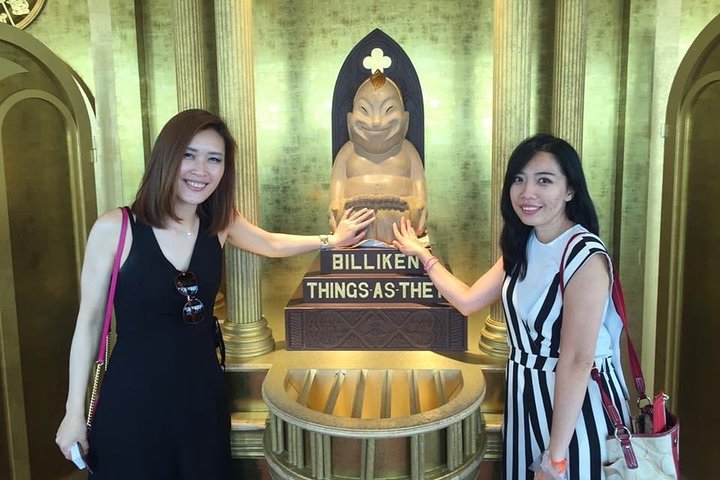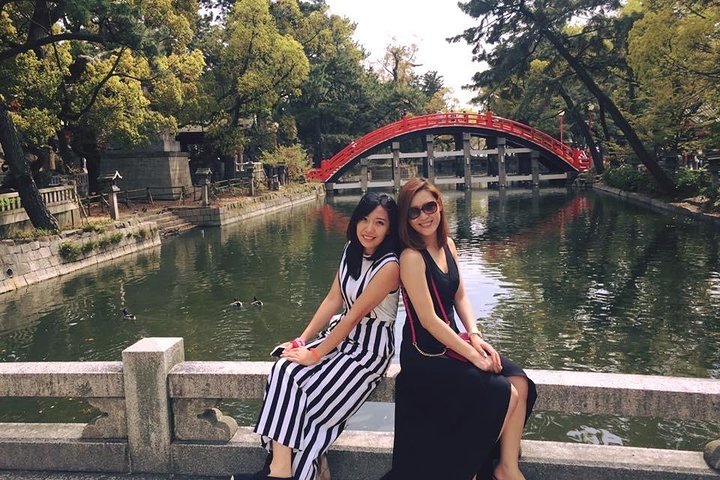» Osaka » Osaka » Osaka
From $1158.13
Price varies by group size
Lowest Price GuaranteePricing Info:
Duration:
Departs: Osaka, Osaka
Overview
What's Included
Air-conditioned vehicle
Private transportation
Toll Fees, Petrol Fees
What's Not Included
Accommodation Fees
Entrance Fees
Meals (Breakfast, Lunch and Dinner)
Parking Fees
Traveler Information
- TRAVELER: Age: 0 - 120
Additional Info
- Face masks provided for travellers
- Face masks required for travellers in public areas
- Guides required to regularly wash hands
- Infants and small children can ride in a pram or stroller
- Paid stay-at-home policy for staff with symptoms
- Regular temperature checks for staff
- Social distancing enforced throughout experience
- Suitable for all physical fitness levels
- Wheelchair accessible
- COVID-19 vaccination required for guides
- Face masks required for guides in public areas
- Gear/equipment sanitised between use
- Hand sanitiser available to travellers and staff
- Infants are required to sit on an adult’s lap
- Public transportation options are available nearby
- Regularly sanitised high-traffic areas
- Specialized infant seats are available
- Transportation vehicles regularly sanitised
Cancellation Policy
For a full refund, cancel at least 24 hours before the scheduled departure time.
- For a full refund, you must cancel at least 24 hours before the experience’s start time.
- If you cancel less than 24 hours before the experience’s start time, the amount you paid will not be refunded.
What To Expect
Todai-ji Temple
Todaiji's main hall, the Daibutsuden (Big Buddha Hall) is the world's largest wooden building, despite the fact that the present reconstruction of 1692 is only two thirds of the original temple hall's size. The massive building houses one of Japan's largest bronze statues of Buddha (Daibutsu). The 15 meters tall, seated Buddha represents Vairocana and is flanked by two Bodhisattvas.
60 minutes • Admission Ticket Not Included
Nara Park
Considered the messengers of the gods, Nara's over 1000 deer have become a symbol of the city and have even been designated as a natural treasure. Deer crackers are for sale around the park, and some deer have learned to bow to visitors to ask to be fed. Nara's deer are surprisingly tame, although they can be aggressive if they think you will feed them, so make sure not to tease them with food.
30 minutes • Admission Ticket Free
Osaka Castle
However, a few years after Hideyoshi's death, Tokugawa troops attacked and destroyed the castle and terminated the Toyotomi lineage in 1615. Osaka Castle was rebuilt by Tokugawa Hidetada in the 1620s, but its main castle tower was struck by lightening in 1665 and burnt down.
It was not until 1931 that the present ferro-concrete reconstruction of the castle tower was built. During the war it miraculously survived the city wide air raids. Major repair works gave the castle new glamor in 1997. The castle tower is now entirely modern on the inside and even features an elevator for easier accessibility. It houses an informative museum about the castle's history and Toyotomi Hideyoshi.
1 hours • Admission Ticket Not Included
Tsutenkaku
The area was developed into its current layout following the success of the 1903 National Industrial Exposition, which brought over five million people to the neighborhood within just five months. Shortly after the expo closed its doors, work began to improve and update Shinsekai.
30 minutes • Admission Ticket Not Included
Shinsaibashi-suji Shopping Street
60 minutes • Admission Ticket Free
Kuromon Market
60 minutes • Admission Ticket Free
Harukas 300 Observation Deck
The observation deck is called "Harukas 300" and occupies the building's top three floors (floors 58 to 60). The observation deck is accessed by elevators from the 16th floor. With large floor-to-ceiling glass panels all around, the 60th floor offers 360 degree views of Osaka, while the 58th floor features an attractively designed inner court with a wooden deck and cafe. A souvenir shop and restrooms with views are also available.
60 minutes • Admission Ticket Not Included
Cup Noodle Museum Osaka Ikeda
However, there is an even more memorable souvenir when it comes to cup noodles. At the Cup noodles Museum Osaka Ikeda in Osaka, you will be able to make your very own original cup noodles!
60 minutes • Admission Ticket Not Included
Umeda Sky Building
The 173 meter tall building consists of two towers that are connected with each other by the "Floating Garden Observatory" on the 39th floor. The observatory offers great views of the city through its windows and from its open-air deck. In the basement, there is a restaurant floor that replicates a town of the early Showa Period, while offices occupy most other floors.
60 minutes • Admission Ticket Not Included
Solaniwa Onsen Osaka Bay Tower
Osaka Resort City 200 (ORC 200) changed its name to Osaka Bay Tower on March 27, 2018. Following that, Hotel Osaka Bay Tower―which welcomes all guests from business people to families―underwent a re-branding and re-opened on March 29. The tower is now set to expand its facilities even further with the grand opening of Solaniwa Onsen.
The hot spring theme park is themed on “Beauty, Healing, Taste.” It will be decked out with natural hot springs, stone saunas, relaxation facilities, restaurants, stores and more. Based on the concept of the Azuchi–Momoyama period of Japanese history, the park fuses traditional Japan with the modern to offer a unique and exceptional experience.
The area in which the park is being set up is where an already hugely popular theme park is based. A world fair is set to take place there in 2025 which will bring more international attention to the Osaka Bay area.
60 minutes • Admission Ticket Not Included
Heijo Palace Museum
Although the palace once stood as the majestic center of the ancient capital, all of its original buildings were eventually lost, with the exception of a single hall that was moved in the 8th century and now stands at Toshodaiji Temple. When the capital was moved away from Heijo-kyo in 784, Heijo Palace and a large part of the city were abandoned as officials and other citizens flocked to the new capital. The temples on the outskirts of the former capital, however, retained their importance, and the city of Nara eventually resumed its growth around these temples, while the palace grounds were used for nothing but rice fields.
30 minutes • Admission Ticket Not Included
Horyu-ji Temple
60 minutes • Admission Ticket Not Included
Kasuga Taisha Museum
Beyond the shrine's offering hall, which can be visited free of charge, there is a paid inner area which provides a closer view of the shrine's inner buildings. Furthest in is the main sanctuary, containing multiple shrine buildings that display the distinctive Kasuga style of shrine architecture, characterized by a sloping roof extending over the front of the building.
30 minutes • Admission Ticket Not Included
Hasedera Temple
60 minutes • Admission Ticket Not Included
Sumiyoshi Taisha Shrine
60 minutes • Admission Ticket Free
Kofuku-ji Temple
30 minutes • Admission Ticket Not Included
Shitennoji
60 minutes • Admission Ticket Not Included
60 minutes • Admission Ticket Free
Namba Yasaka Shrine
30 minutes • Admission Ticket Free
Reviews
« All Activities







































